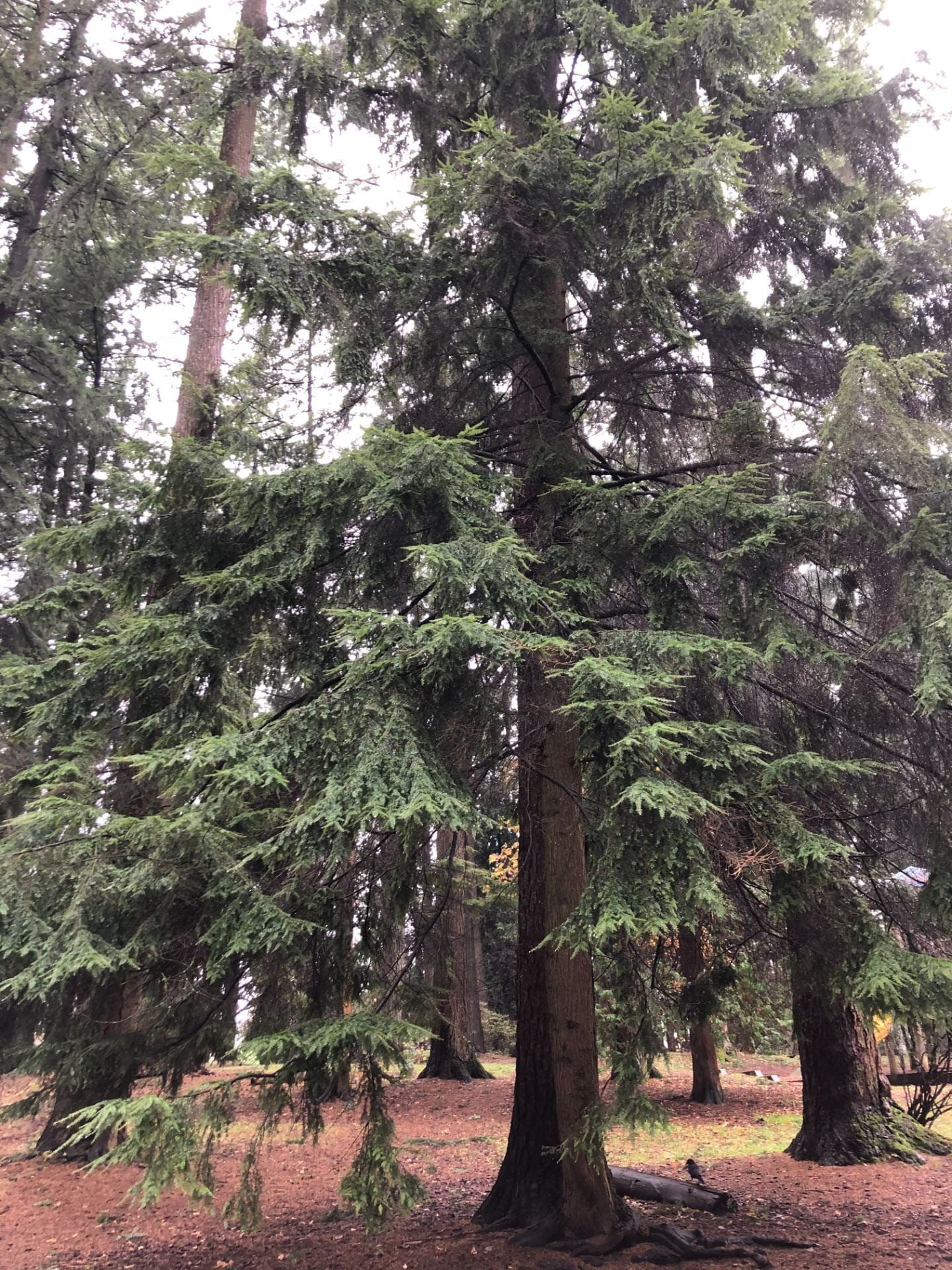Western Hemlock

Western hemlock is one of the three most common native evergreen conifers in our neighbourhood, with the others being western redcedar and Douglas-fir. Walk through a forested park and you are likely to see western hemlock saplings (young trees) perched on decaying logs and stumps, so called nurse logs. Western hemlocks are fairly easy to identify from close up once you know what to look for. Like the other trees I have written about, you can look both down and up for clues. The overall shape of the tree is “drooping” with downward hanging branches and leader (top of the tree). When I look at the picture above it reminds me of someone with hands outstretched motioning “calm down, calm down”. Western hemlock cones are small with shapely and thin rounded overlapping scales. Mature trees are often heavily laden with old and new cones on all the branches but, if you can’t see any on the tree, look on the ground for some.



The second thing to look for when attempting to identify a western hemlock is the needles (leaves). Western hemlock boughs feel relatively soft when you run your hands down them, with their flat needles sticking out from the twigs mostly in only two directions, unlike the Douglas-fir which has needles protruding in all directions. Western hemlock needles vary in length, and this is reflected in the scientific name Tsuga heterophylla. “Hetero” for different “phylla” for leaves.

 A view of the underside of the needles. Notice there are no needles pointing out from the underside except at the tips. There is a clear view of the twigs when viewed from below.
A view of the underside of the needles. Notice there are no needles pointing out from the underside except at the tips. There is a clear view of the twigs when viewed from below.




The bark of western hemlock trees, like other trees, changes with age. Smooth when young, it becomes furrowed and kind of scaly with age.



There is another native hemlock tree in British Columbia, the mountain hemlock. This species, however, is normally found at higher elevations and has larger cones than western hemlock trees and upturned needles that cover all sides of the branches.
From reading, I have really come to be amazed by western hemlock trees. Prior to looking for trees to take pictures of, I hadn’t smelled the crushed needles of a western hemlock. They release a very refreshing and calming aroma when rubbed between your fingers. Western hemlock has many edible and medicinally valuable parts as used by North American First Peoples for thousands of years. The sweet cambium can be eaten as can small amounts of the needles. The cambium was harvested then cooked for many hours, then pounded before being formed into loaves. The loaves were dried in the sun, stored, then rehydrated before eating. Hemlock boughs were used in the harvest of herring spawn. The wood was used for many purposes from spear shafts to fishing hooks and large carved dishes, but not for fires. The soft boughs could be used as bedding. The bark of western hemlock trees is high in tannins, chemicals abundant in nature which have many uses, from tanning leather to cleaning off rust. Western hemlock needles are high in vitamin C and can be used to make tea or chewed as a hunger suppressant. Remember, DO NOT CONSUME OR USE ANY PLANT/FUNGI UNLESS YOU ARE 100% SURE OF THE IDENTITY AND APPROPRIATENESS AND SAFETY OF USING IT.
So, as you head outside this week look for small cones, drooping branches, and different lengths of flat needles on the amazing western hemlock trees!
Books I used:
Native Trees of British Columbia, by Reese Halter et al., Global Forest-Pure Science, 2003, p. 53.
“Tsuga heterophylla.” Vancouver Tree Book: a Living City Field Guide, by David Tracey, Pure Wave Media, 2016, pp. 76-77.
“Western Hemlock.” Plant Technology of First Peoples in British Columbia, by Nancy J. Turner, Royal British Columbia Museum, 2019, pp. 97–99.
“Western hemlock.” Tree Book: Learning to Recognize Trees of British Columbia, by Roberta Parish and S. M. Thomson, Canadian Forest Service, 1994, pp. 88-91.